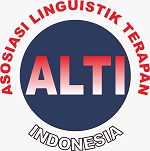The Effectiveness of Fishbowl Technique towards Students’ Self-Efficacy in Speaking
DOI:
https://doi.org/10.33394/jollt.v5i2.345Keywords:
Fishbowl Technique, Self-Efficacy, Speaking SkillsAbstract
This study is generally attempted to find out whether or not of Fishbowl technique effective towards students’ self efficacy in speaking for second grade students of SMPN 1 Sikur academic year 2017/2018. method of this research was applied is experimental research (quantitative approach). The population of this research was of second grade students at SMPN 1 Sikur. which consistes of eight classes. the samples, were VIII A as experimental class, and VIII C as control class. They were chosen by using cluster random sampling technique with lottery. Experimental class was treated by using fishbowl technique, and control class was treated by using role play. The technique which was used to analysis the data was test formula. From the research data found out that the students’ t-test score (1,73) and t-table (1,667) from (df) was 64. Based on the result of the study, and the correlation between self-efficacy and speaking was r-test (2,70) > r-table (0,320). It can be concluded that the use of fishbowl technique has positive effect toward students’ self-efficacy in speaking and has correlation both of them at the second grade students SMPN 1 Sikur academic year 2017/2018.
References
Anas Sudijono. 2010. Pengantar Statistik Pendidikan. PT Raja Grafindo Persada: Jakarta.
Bandura, A. 1994. Self-Efficacy. In V. S. Ramachaudran (Ed.). Encyclopedia of Human Behavior. New York: Academic Press.
Bandura. 1997. Guide for Constructing Self-Efficacy Scales. Toward an unifying theory of behavioral change. Psychological Review.
Brown, Douglas H. 2007. Language Assessment Principles and Classroom Practices. California: Longman.
Brown D. 2004. Language Assessment Principles and Classroom Practices. California: Longman.
Brown D. 2003. Language Assessment Principles and Classroom Practices. California:Longman.
Brown D. 2002. Language Assessment Principle and Classroom Practices. California: Longman.
Brown D. 2001. Teaching the Spoken Language. Cambridge: Cambridge University Press.
Channey, A. L. 1998. Teaching Oral Communication in Grades K-8. Boston: Allyn & Bacon.
Fathurrahman Imran. 2015. Penelitian Experimental. Mataram Institute of Teacher Training and Education Faculty of Language and Art Education English Department.
John. Wileyand Sons.2005. Essentials of Research Design and Methodology. Hoboken, New Jersey, simultaneously in Canada.
Miller, Steve. 2005. Experimental Design and Statistics (2nd Edition). New York: Routledge.
Silberman, Malvin L. 2002 active learning 101 strategies to teach any subject,(copyright: simon and Schuster Company) in http://budiman2013.blogspot.co.id.
Suharsimi. 2003. Prosedur Penelitan Suatu TindakanPraktik. Jakarta: PT. RinekaCipta.
Schunk, D. H. 1995. Self- Efficacy for Reading and Writing: Influence of Modeling, Goal Setting and Self Evaluation. Educational Psychologist.
Schunk, D. H. 2010. Prosedur Penelitian Suatu Tindakan Praktik. Jakarta: PT. RinekaCipta.
Thornbury, Scott. 2002. How to Teach Speaking. New York: Longman.
Downloads
Published
How to Cite
Issue
Section
Citation Check
License
License and Publishing Agreement
In submitting the manuscript to the journal, the authors certify that:
- They are authorized by their co-authors to enter into these arrangements.
- The work described has not been formally published before, except in the form of an abstract or as part of a published lecture, review, thesis, or overlay journal.
- That it is not under consideration for publication elsewhere,
- That its publication has been approved by all the author(s) and by the responsible authorities – tacitly or explicitly – of the institutes where the work has been carried out.
- They secure the right to reproduce any material that has already been published or copyrighted elsewhere.
- They agree to the following license and publishing agreement.
Copyright
Authors who publish with JOLLT Journal of Languages and Language Teaching agree to the following terms:
- Authors retain copyright and grant the journal right of first publication with the work simultaneously licensed under a Creative Commons Attribution License (CC BY-SA 4.0) that allows others to share the work with an acknowledgment of the work's authorship and initial publication in this journal.Â
- Authors are able to enter into separate, additional contractual arrangements for the non-exclusive distribution of the journal's published version of the work (e.g., post it to an institutional repository or publish it in a book), with an acknowledgment of its initial publication in this journal.
- Authors are permitted and encouraged to post their work online (e.g., in institutional repositories or on their website) prior to and during the submission process, as it can lead to productive exchanges, as well as earlier and greater citation of published work.
Licensing for Data Publication
- Open Data Commons Attribution License, http://www.opendatacommons.org/licenses/by/1.0/ (default)
This work is licensed under a Creative Commons Attribution-ShareAlike 4.0 International License.
















